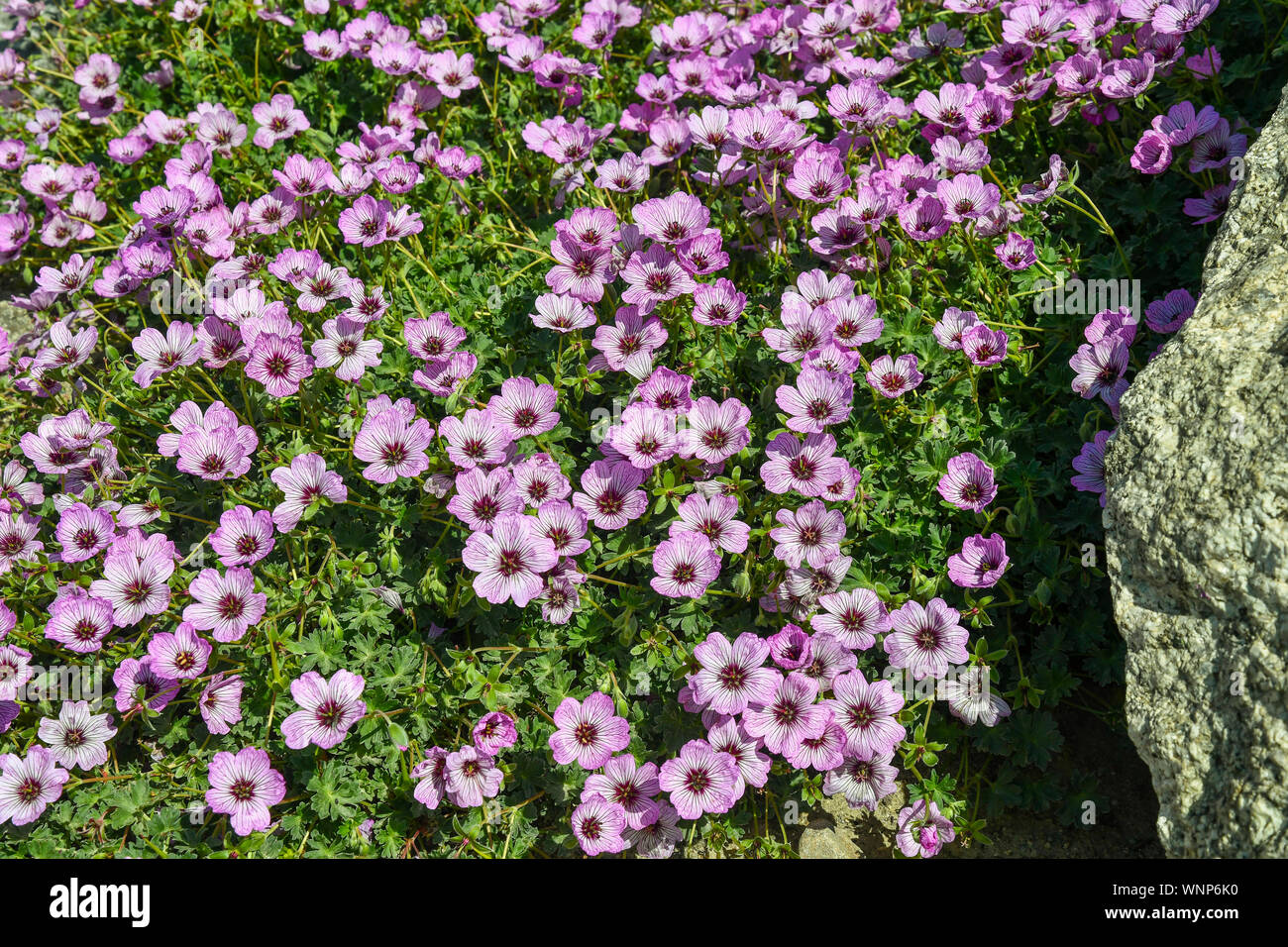The delicate pink blooms of the Alpine stork’s bill flower (Erodium reichardii) are a beautiful addition to rock gardens and alpine landscapes. However, keeping these charming wildflowers thriving requires paying close attention to their water needs. Understanding how much water to give your Alpine stork’s bill will ensure your plants stay healthy and produce abundant flowers.
The Importance of Proper Watering for Alpine Stork’s Bill Flowers
Like all plants, the Alpine stork’s bill requires regular moisture to survive and flourish. Water enables these plants to carry out essential processes like:
-
Photosynthesis – Water keeps leaves cool and hydrated so they can convert sunlight into energy
-
Nutrient uptake – Roots absorb vital minerals dissolved in water from the soil
-
Transpiration – Water evaporates from leaves, which pulls more water and nutrients up from the roots.
-
Growth – Stems, leaves, and flowers expand through cell division fueled by water.
Without adequate water, Alpine stork’s bill will become stressed, leading to wilting, poor growth, and diminished blooms. Too much water can also be detrimental by causing rot, fungal diseases, and root damage. Getting the right balance is key!
How Much Water Does Alpine Stork’s Bill Need?
Though drought-tolerant, Alpine stork’s bill still needs regular deep watering during the growing season for optimal health. Here are some general guidelines:
-
Soil – Check moisture daily by finger test. Water when top 1 inch is dry.
-
New transplants – Require more frequent watering until established. Water when top 0.5 inch is dry.
-
Mature plants – Need deep watering 2 times per week during active growth and flowering.
-
Amount – Provide 0.8 cups of water per plant when soil is dry. Adjust amount based on plant size, container size, and climate.
-
Frequency – Watering frequency depends on temperature, sunlight, humidity, soil type, and other factors. Adjust as needed.
-
Rainfall – Reduce watering if receiving consistent rainfall. Stork’s bill appreciates showers!
-
Dormancy – Cut back on watering in fall/winter when plant goes dormant. Water only if soil is completely dry.
-
Drainage – Always allow excess water to drain fully after watering to prevent soggy soil.
Reading Your Plant’s Thirst Signals
In addition to finger-testing the soil, observe the plant’s appearance for visual cues that it needs water:
- Wilting/drooping leaves and flowers
- Leaves changing color or turning brown
- Lackluster or dying blooms
- Slow growth and small new leaves
- Stunted stem elongation
If you notice any of these signs, it’s time to thoroughly water your Alpine stork’s bill. The plant will usually bounce back within a day or two after receiving a good drink.
Tips for Watering Alpine Stork’s Bill Successfully
Follow these tips for mastering water needs:
-
Water early in the day to reduce evaporation loss.
-
Avoid wetting foliage, water at soil level.
-
Use filtered or rain water for best results.
-
Add organic mulch to help retain moisture.
-
Group plants with similar needs to simplify watering.
-
Use drip irrigation or soaker hose to apply slow, deep watering.
-
Be prepared to water more frequently in hot, dry, windy conditions.
-
Check soil and plant appearance daily to gauge water needs.
Recognizing Signs of Overwatering
While the Alpine stork’s bill flower can tolerate short periods of drought, overwatering poses a far bigger threat. Watch for these signs:
-
Constantly soggy, muddy soil
-
Mushy, black roots
-
Leaves turning yellow or brown
-
Rot spreading through stems and crowns
-
Fungal growth on leaves and soil
-
Plants collapsing or dying
If you notice any indicators of overwatering, stop watering immediately and allow soil to dry out completely before resuming a more moderate watering routine. Improving drainage can also help prevent future issues.
Caring for your delightful Alpine stork’s bill flowers depends on providing adequate moisture without oversaturation. Pay close attention to soil dryness, the plant’s appearance, weather conditions, and other variables that influence water needs. With a little vigilance and making adjustments as needed, you can easily keep your Alpine stork’s bill flourishing beautifully year after year. The charming pink blooms will be a water-wise reward in your rock garden or alpine containers.

k
REDSTEM FILAREE California wildflowers, Erodium cicutarium; Common Stork’s Bill,Heron’s Bill,Pinweed
FAQ
How much water should I water my flowers?
How much water does a corpse flower need?
How much water does a poppy flower need?
How often do you water flower bushes?
What does a stork’s Bill look like?
Common Stork’s-bill is hairy plant of dry grasslands, and bare and sandy areas, both inland and around the coast. Its bright pink flowers appear in May and last through the summer until August. The resulting seed pods are shaped like a crane’s bill (hence the name) and explode when ripe, sending the seeds, with their feathery ‘parachutes’, flying.
How much water does a hairy stork eat?
Raw Hairy stork’s bill are 90.6% water, 7.9% carbohydrates, 0.6% protein, 3% dietary fiber, 0.8% ash and 0.1% fat. ^ “Erodium cicutarium (L.) L’Hér”.
What is a storksbill plant called?
Common Names: Alfilaria, Filaree, Storksbill, Heron’s Bill, Pin Clover. Life Cycle: Hardy perennial. Half hardy perennial. Annual. Height: 3 to 36 inches (8 to 90 cm). Native: Mediterranean, Western Asia. Family: Geraniaceae. Growing Region: Zones 6 to 10. Flowers: Early to mid summer. Flower Details: White, pink, lavender. yellow. Cup-shaped.
Is stork’s Bill a noxious weed?
Colorado calls it a noxious weed. Scientifically Stork’s Bill is called Erodium cicutarium (er-OH-dee-um sik-yoo-TARE-ee-um.) Erodium is from the Greek word Erodios, meaning heron — now there’s a surprise. Cicutarium — Latin — means resembling the genus Cicuta, the Poison Hemlock, and it does.
